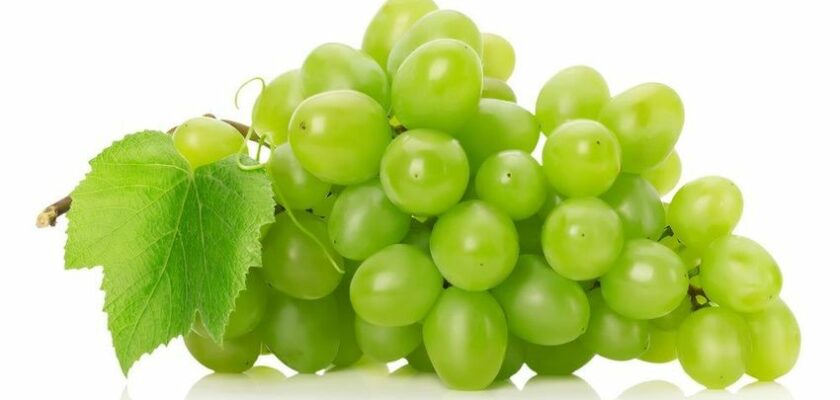Thompson Seedless grapes, also known as Sultana grapes, are a popular and widely enjoyed grape variety known for their sweet, juicy, and seedless nature. They are a versatile fruit that can be eaten fresh, used in recipes, or dried into raisins. When purchasing Thompson Seedless grapes, consider the following factors to ensure you choose the best quality fruit:
- Color: Thompson Seedless grapes typically come in two colors: green and golden. Look for grapes that have a consistent color throughout the bunch. Choose green grapes that are pale green to light yellow and golden grapes that have a rich, golden hue. Avoid grapes with brown spots or shriveled skin, as these may indicate age or spoilage.
- Firmness: Gently squeeze a few grapes to assess their firmness. The best Thompson Seedless grapes should be plump, firm, and spring back slightly when pressed. Avoid grapes that are overly soft or mushy, as they might be past their prime.
- Size: Size doesn’t directly affect taste, but some people prefer larger grapes, while others enjoy smaller ones. Choose grapes that suit your preference and intended use. Larger grapes can be more suitable for snacking, while smaller ones might be better for salads or garnishing desserts.
- Bunch Appearance: Inspect the grape bunch for freshness. The stems should be green and firmly attached to the grapes. Avoid bunches with dry, brown stems or ones where the grapes have started to fall off, as these are signs of aging or poor handling.
- Taste and Aroma: If possible, sample one grape from the bunch before purchasing. Thompson Seedless grapes should have a sweet, delicate flavor and a pleasant, fruity aroma. The taste should be refreshing and not overly tart. Trust your taste buds to determine if the grapes meet your expectations.
- Organic vs. Conventional: Decide whether you prefer to buy organic or conventional Thompson Seedless grapes. Organic grapes are grown without synthetic pesticides and fertilizers, making them a choice for those who prioritize environmental and health considerations. Conventional grapes are more widely available and might be more budget-friendly.
- Season and Origin: Thompson Seedless grapes are typically in season during late summer and fall. Check the label or ask the seller about the grapes’ origin to ensure they are fresh and not stored for an extended period. If possible, opt for locally grown grapes for the freshest and most flavorful experience.
- Packaging: Thompson Seedless grapes are commonly sold in bunches or clamshell containers. Examine the packaging to ensure it is clean and free from damage. Clamshell containers offer better protection for the grapes during transportation and may have the advantage of being resealable for storage.
- Special Considerations: If you have any dietary preferences or restrictions, such as looking for non-GMO or sustainably sourced grapes, research the available options and certifications in your area.
In conclusion, choosing the perfect Thompson Seedless grapes involves considering their color, firmness, size, bunch appearance, taste, season, packaging, production method, and any special considerations. By paying attention to these factors, you can enjoy the delightful sweetness and versatility of Thompson Seedless grapes in your snacks, salads, desserts, and more. Happy grape hunting!
